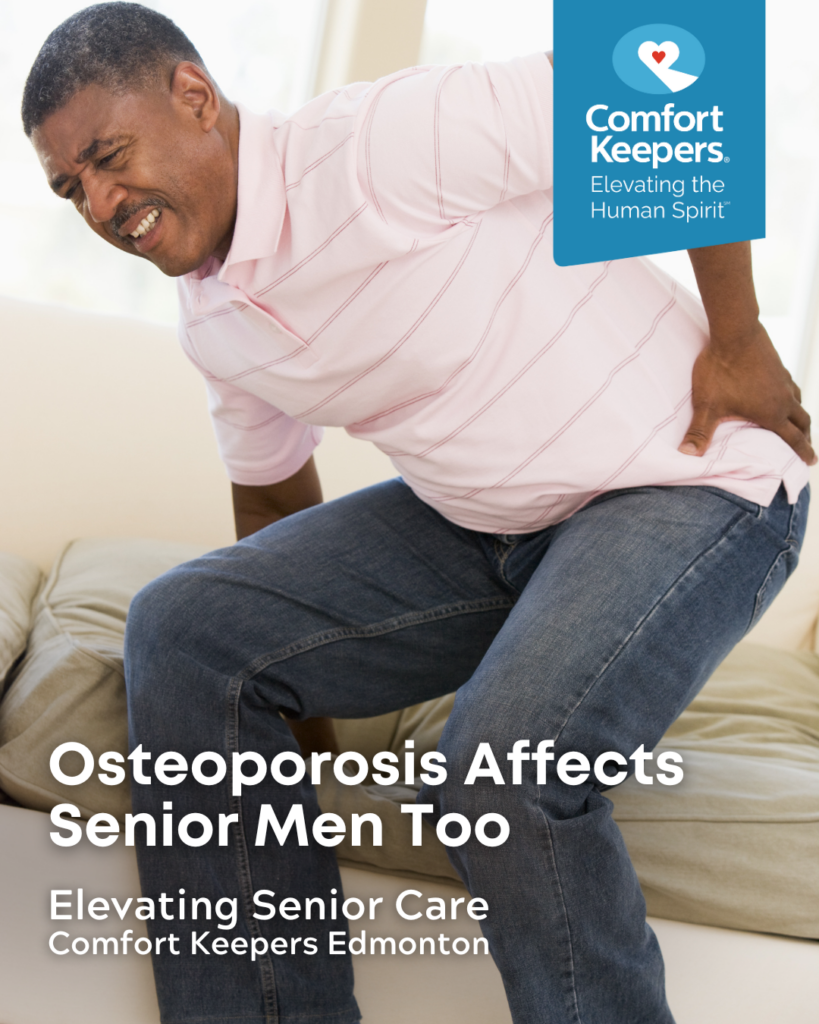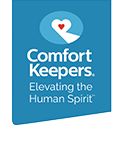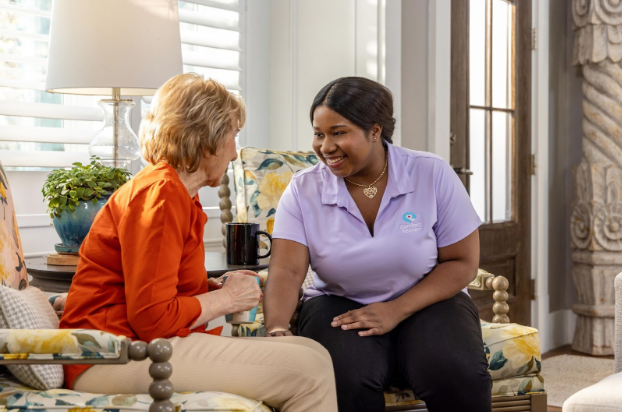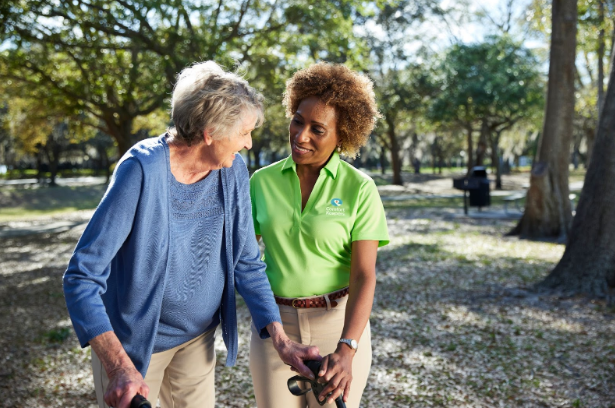Osteoporosis Affects Senior Men Too
Senior Health | June 18, 2025

What Every Senior Make in Edmonton, AB, Needs to Know About Osteoporosis
Osteoporosis Affects Men | Osteoporosis gets plenty of press with older women, but older men would do well to assess their risk for this disease. Osteoporosis is a disease that causes bone density loss in both women and men. Its progression is silent, and without screening, it usually becomes evident when the person suffers a fractured bone from a low-impact activity. More than half, 55%, of all senior adults in Canada have osteoporosis. Fractures from osteoporosis are more common than heart attack, stroke and breast cancer combined
Fast Fact About Osteoporosis in Men
More men over the age of fifty (one in four) will suffer from a broken hip due to osteoporosis than will get prostate cancer.
While osteoporosis appears to affect fewer senior men than women (one in five men compared with one in three women), the consequences for men are more severe. For example, older men are more likely to die within a year of having a hip fracture due to bone loss. Unfortunately, due to a lack of understanding of the disease, older men are also less likely to be diagnosed with and receive treatment for osteoporosis after a fracture occurs. Considering this, men over 50 may want to be proactive and find out if they have osteoporosis so they can receive treatment for it before a fracture occurs. They can start by assessing their risk.
Higher risk include those with the following:
- Family history of bone fractures, especially hip fractures, due to osteoporosis
- Smoking
- Inactive lifestyle
- Excessive alcohol use
- Certain medications used over prolonged periods of time, such as corticosteroids, sedatives, antidepressants, and medications that inhibit the absorption of calcium
- Low body weight and weight loss
- Loss of height
- Abnormally low levels of sex hormones
- Gastrointestinal disorders that prevent the absorption of nutrients such as calcium, magnesium, vitamins D and K, phosphorous, and amino acids (all essential for bone health)
Older men who have any of these factors should discuss their risk with their doctors and request a screening, although there is some controversy as to whether those test results can be interpreted the same for men as for women. They can also make lifestyle changes that will help decrease their risk, including decreasing alcohol intake, stopping smoking, increasing activity levels, and doing weight-bearing exercises. Any dramatic lifestyle changes should only be done, however, after consulting with a medical professional. By taking action early, older men can tackle osteoporosis before it causes significant bone density loss and help ensure they stay independent and active longer.
Comfort Keepers® Edmonton is Proud to Offer a Wide Range of Home Senior Care Services
Our trained caregivers will ensure your loved one is comfortable, independent and safe in their home. On top of that, we will also aim to enhance their overall health, quality of life and general happiness.
Top-Notch Home Healthcare for Seniors in Edmonton, Alberta
Comfort Keepers of Edmonton offers a wider range of senior care services. We offer retirement care, respite care, senior care, companionship care, end-of-life care, post-surgery care, palliative care, personal care, and senior living transition services. If you are concerned about the health and well-being of your aging loved ones we can help with 24-hour care and more!
Helping Seniors Age-in-Place with Companionship Care and Interactive Caregiving™
Empathetic care starts in the heart and allows us to meet our client’s needs. Our trained caregivers are selected with one specific quality in mind, empathy. We strive to stimulate our clients emotionally, mentally and socially, thus enhancing their overall quality of life.
Our Interactive Caregiving™ provides a system of care that addresses companionship, safety, nutrition, mind, body, and activities of daily living (ADLs). The system increases seniors’ sense of well-being, independence and companionship by focusing on Senior Mind, Senior Body, Senior Nutrition, and Senior Safety.
Affordable and Client-Directed Homecare is Available for Qualifying Albertans
Comfort Keepers® Edmonton is an Approved Service Provider for the Client Directed Homecare Invoicing (CDHCI) Program Offered by Alberta Health Services.
What is the Client Directed Home Care Invoicing Program (CDHCI)?
CDHCI is a great program provided by Alberta Health Services (AHS), allowing clients to choose an approved agency like, Comfort Keepers Edmonton for Personal Care, Respite Care and Homemaking needs. The chosen agency can then bill AHS directly for services rendered for approved hours through Alberta Blue Cross. Read more about the program HERE.
Accredited Home Care Edmonton
Comfort Keepers® Edmonton was awarded the “Accredited with Exemplary Standing” seal by Accreditation Canada. This honour demonstrates Comfort Keepers’ commitment to offering safe, high-quality home care to its senior clients in Edmonton, AB.
To learn more about senior in-home care in Edmonton, contact the Comfort Keepers® office. Our service territory includes Edmonton, Devon, Sherwood Park, Stony Plain and surrounding areas, contact the Comfort Keepers Edmonton office at 780-465-4665.
References
Osteoporosis Canada. Facts and Figures.
American Academy of Orthopaedic Surgeons. (May 2009). Osteoporosis and bone health. AAOS Now.
International Osteoporosis Foundation. (n.d.). Facts and statistics.
National Osteoporosis Foundation. (n.d.). Just for men.
NIH Osteoporosis and Related Bone Diseases–National Resource Center. (January 2012). Osteoporosis in men.
Individualized Home Care Options
Long-Term Home Care, 24 Hour Home Care & Short Term Care Options Customized for You







